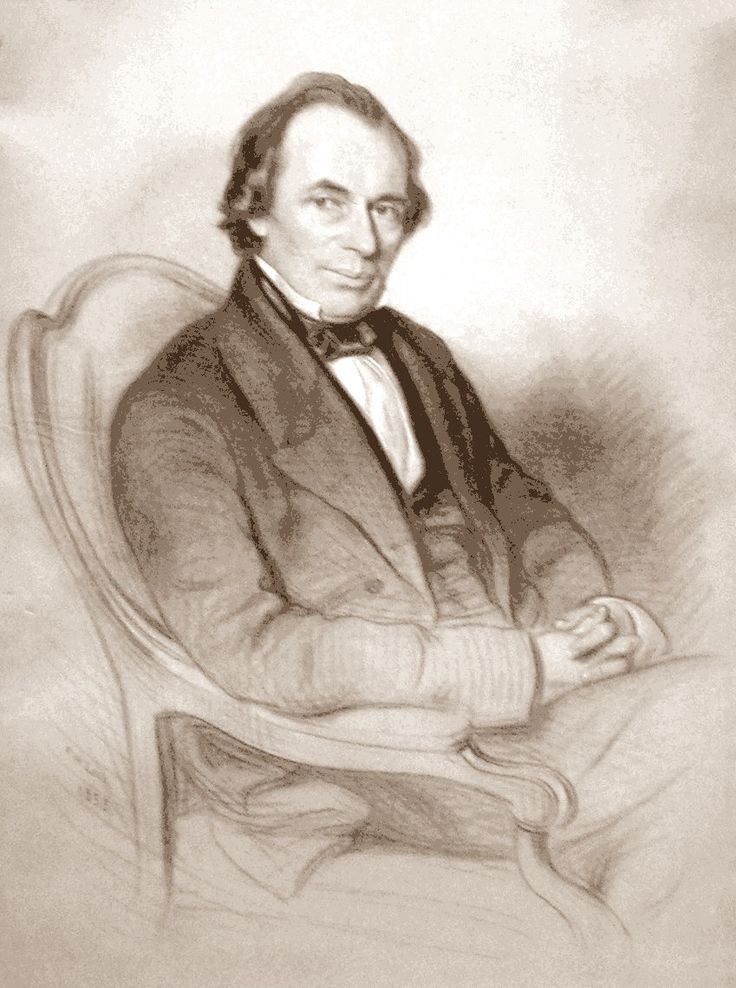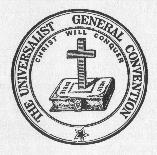
Note—This post required extensive
research to refresh my once solid knowledge of this history. Time erodes things.
Last Sunday, May 25, was the 200th anniversary
of the founding of the American Unitarian Association in Boston by ministers
serving mostly in and around the Hub of the Universe in 1825. The ministers all served self-governing congregations
that were affiliated with the New England Standing Order, the former
state church of Massachusetts, Maine, Connecticut,
and New Hampshire.
The Rev. Sofía Betancourt, President
of the Unitarian Universalist
Association (UUA) wrote:
…we celebrate 200 years of
the American Unitarian Association at a time when Unitarian Universalism is
badly needed in our nation and in the world. We should be proud of the
accomplishments and impact of liberal thought and the theology that grows from
that thought. Yet too there is trouble born of comfort in thinking that we know
best when it comes to restoring justice and building a world and an Earth
community that allows all to fully thrive.
So how do we proceed as
authoritarianism is on the rise both domestically and around the world? We must
remember that we are a sanctuary people—not only in collaborating around the
work of justice, but also in providing nourishment and shelter for our own
spirits so that we do not give up in the face of all that is.
Happy anniversary, beloveds.
May this milestone year be one that galvanizes us in all the ways we are called
to live into this moment and organize around our shared values in community.
Liberal preachers had been drifting away from the
rigid orthodoxy of hell-fire-and-damnation Calvinism that arose
from Puritanism since before the American Revolution. Inspired by the Enlightenment these
ministers were increasingly skeptical of the Doctrine of Predestination,
the literal as opposed to symbolic or poetic absolute truth of every Bible
story, proof by miracles, and finally even the divinity of the
man named Jesus and the Doctrine of the Trinity.
Rev. William Ellery Channing defined Unitarianism in his Baltimore ordination sermon in 1819 and was a prime mover in establishing the American Unitarian Association.
These differences became more
profound after The Rev. William Ellery Channing preached an ordination
sermon for Rev. Jarred Sparks at the First Independent
Church of Baltimore on May 5, 1819.
The speech published in pamphlet form as Unitarian Christianity
outlined a broad platform of belief and gave the movement an identity and a name—unitarianism. Unitarianism was once an epithet used against
non-Christian monotheists including
despised Jews and Muslims and a handful of heretic
anti-Trinitarians. Channing threw it
in the face of the descendants of Cotton Mather—Sinners in the Hands of
an Angry God—who dominated the Standing Order. Asserting unitarianism was not even the main
focus of the address. The right to read
and interpret scripture using individual consciousness and reason
was.
An open breach of the old Standing
Order became inevitable. The
traditionalists became the Congregational Church and dominated outside
the environs of Boston and port cities.
The fiercely independent liberals resisted any form of ecclesiastical,
Presbytery, or other denominational structure. They adhered to the Cambridge Platform of
totally independent and self-governing congregations. Aside from voluntary reciprocal cooperation
of neighboring congregations and informal cooperation among ministers the newly
define Unitarians lacked any cohesion.

Andrews Norton, influential Harvard scholars was among the insurrectionists who founded the AUA but within a few years the so-called Unitarian Pope--was the leading voice for suppressing dissent from a new orthodozy.
The need to compete with the
Congregationalists, Episcopalians, Quakers, Universalists and
other denominations with well-established national and regional press and
resources for publishing tracts, pamphlets, and sermons. After private conversations and letter
exchanges William Ellery Channing; Andrews Norton, Harvard Professor
of Sacred Literature known to
friends and enemies alike as “the Unitarian Pope;” and Henry
Ware, the senior along with wealthy and influential laymen like convened
a semi-chaotic meeting in January 1825.
The meeting call stated they were to consider “the practicality and
expediency of forming a Unitarian convention or association, to consist of
clergymen and laymen, to meet annually or oftener.”
After a day of wrangling the meeting
adjourned with the intent of forming a committee or commission to study and
make recommendations. Like many such committees
it never really got together. According
to an account in short play by Nancy McDonald Ladd in UUWorld:
….on May 25, 1825, an energetic group of younger
ministers led by James Walker, Henry Ware Jr., and Ezra Stiles
Gannet, all of whom had been present for that historic debate, went rogue.
They arrived at the Berry Street Conference in Boston and personally
presented their own plan for a new convention of Unitarian clergy. Met with
affirmation from certain members of that body, on the very next day—May 26,
1825—they chartered the American Unitarian Association.

Henry Ware, Jr. was among the young ministers who got the AUA going.
By an amazing
coincidence the very same day that the British and Foreign Unitarian
Association was chartered across the puddle establishing an official body
for radical dissenting congregations in Britain and Ireland after
restrictions on their worship were lifted by Parliament. The kissing cousins were somewhat different
in theology and Christology and significantly different in governance. The Brits adopted a Presbyterian structure.
The new AUA was not
an organizations of churches or parishes.
It was strictly a voluntary association of Ministers individual laymen
with an interest in fostering the spread of Unitarianism. It was governed by a Board and
employed a part time secretary essentially someone to take notes, open
the mail, and assist the elected Treasurer in the banking details of
collecting and spending money. He was
also tasked with maintaining an annual roster of Ministers who were understood
to be Unitarian in theology and preaching.
Within a few years the annual list became considered a more or less
official recognition.
Trouble began because
it was subject to the whims, prejudices, and the reliability of information
available to a clerk. Some who wished
to be included were turned down with no explanation, but usually because of
some variation from an unexplained “norm” or because of scandal and perceived moral
defects. Andrews Norton became the
champion of a Unitarian Orthodoxy while many younger ministers were drawn into
the orbit of Transcendentalism or were influenced by Free Thinking. Applications were turned down from the suspected “heretics”
and even from those who were suspected of any association with them.
Conversely, some enrolled
ministers demanded to be removed mostly in protest to Nortons heavy hand.
Although ostracized by Unitarian traditionalist because of his outspoken abolitionism and militant support of Fugitive slaves, Rev. Theodore Parker became the inspiration for the first new minister members of the post-Civil War AUA.
There were many
subsequent challenges that the barely organized AUA struggled with—divisions over
slavery and the enforcement of the Fugitive Slave Act, how close
to adopt radical abolitionism or distance itself from it, and especially
the inability to plant new congregations outside of New England and to recruit
and support missionary ministers.
Unitarians seemed doomed to be just a local tribal sect rather than a
vital part of the American religious rights.
Brilliant radicals like the Rev. Theodore Parker showed a
new way but were ostracized by the previous generation of rebels.
The Civil War and
its aftermath demanded a new organization of congregations rather than
individuals with denomination like authority—the National Conference of
Unitarian and Other Christian Churches.
A special meeting of the AUA was
held on December 7, 1864 which, recognized the
need of enlarged denominational
activity with a resolution calling for “a convention, to consist of the pastor
and two delegates from each church or parish in the Unitarian denomination, to
meet in the city of New York, to consider the interests of our cause, and to
institute measures for its good.”

Rev.
Henry Bellows, prime mover and first Chair of the Board of the General Conference of Unitarian and Other Christian Churches.
The Convention was
held in New York on April 5 and 6, 1865
and organized the National Conference of Unitarian and Other Christian
Churches. The name was changed to General Conference of Unitarian and Other
Christian Churches at Washington, D.C. 1911. There was resistance by Cambridge Platform purist
congregations and ministers who did not, at least immediately, join the new
Conference. The prime mover was the Rev.
Henry Bellows, a practical second generation Transcendentalist with
immense organizations skills honed as the leader of the United States
Sanitary Commission which supported sick and wounded Federal troops
during the Civil War. From 1865 to 1880
was chairman of its council.
The General Conference
did not replace the AUA, which continued to be active as an individual
membership organization and a continuing support for Unitarian outreach. The National Conference, and after about 1875
the semi-independent Chicago based Western Unitarian Conference provided
direct support for member congregations and their ministers. The WCA under the leadership of the Rev.
Jenkin Lloyd Jones was the more social justice and labor friendly as
well as embracing humanism, Free thought, and inspiration by non-Christian
world religious traditions. The General
Conference wanted to keep Unitarianism in the Christian orbit for respectability
among the “better classes” of people.

Felix Adler, the ethnic German Jew who was founder of the Ethical Humanist Movement, a close ally of Jenkin Lloyd Jone's Unity Movement, and a prominent figure in the Free Religious Association.
Many of those
rejected who rejected explicit Christian identity formed the alternative Free
Religious Association in the 1870’s which flourished for a few years
before gradually being reabsorbed by an evolved AUA and General Conference
Former President and
Chief Justice served as President of the Conference during World War
I and the Red Scare after. He
also purged pacifist ministers and those with connections to radicals in
the Socialist Party and Industrial Workers of the World.
The post-Great War
period matched accelerating technical and industrial innovation and pervasive
shock and disillusion over the carnage. The
AUA and Conference were riven over demands by traditionalists for explicit
identification as Christian and demands for or limits on freedom of
conscience protections. Compromises,
unacceptable to the most passionate on each side, were made.

Humanism became the dominant tendency of Unitarian and later Unitarian Universalism in the second half of the 20th Century.
Unitarian ministers,
and some Universalists who were going through similar struggles, were prominent
signatories to the first Humanist Manifesto in 1933. The Manifesto gained more support during the Great
Depression and another looming World War.
In 1941 the American Humanist Association was formed. Many ministers and prominent lay people
retained affiliation. Their influence
grew and by the mid-1950s Humanism was the dominant strain of Unitarianism. They continued dominance into the early 21st
Century.
Along the way the
divided rolls and authority of the AUA became cumbersome and expensively
duplicative. In a major reform and reorganization
the AUA subsumed the Conference but adopted much of its structure and
governance including being an association of congregations. The AUA continued to honor and accept
individual members, but those members would not have much voting power at annual
May Meetings (conventions) compared to representatives of congregations
who cast important votes based on their membership numbers.
The post-war AUA
sought to broaden to include other progressive bodies into a new Council of
Liberal Religion. Outreach went out
to liberal Quakers, progressive Congregationalists, Ethical Humanists,
and others. The Congregationalists had
similar goal but instead formed the new United Church of Christ with
some Reform churches, and independent congregations. Relations between the cousin organizations
remained cordial and they collaborated especially on social justice issues.

The 19th Century seal of the Universalist General Convention.
While the Council
never really took off, relations with the Universalist General Convention (later the Universalist Church in America) did. Universalists had deep roots in New England
and a semi-mythological origin story.
Believers in universal salvation by a loving God and
radical egalitarianism in this life, they were organized by mostly self-taught
preachers and began forming regional conferences
after the Revolutionary War. The
Universalists in the early years tended to be farmers, local merchants and
trades people, some respectable if not wealthy gentry, and even laborers and
(in some cases) Black Freemen.
The class divide with Unitarians, especial the old Boston Brahman
elite, was intense. But over the next century and a half each
group evolved, theological divisions blurred, and shared a general liberal
religious outlook.
The interesting and
complex story of the Universalist is too long to consider here. Another day perhaps.

Prominent Unitarian Minister Rev. Dana McLean Greeley (center) at his inauguration as first President of the new Unitarian Universalist Association flanked by Rev. Harry B. Scholefield (left) and Lawrence G. Brooks. The dynamic leader committed the new Association and its resources to the Civil Rights movement and anti-war protest. He was often on the streets and front lines of the struggle and was arrested. He set a pattern of UUA leaders as outspoken social justice activists.
In the 1950s the two
faiths began sharing religious education materials, curriculum, and even a
youth group—Liberal Religious Youth (LRY). Then they began cooperating on publication. Serious talks about a possible
merger heated up culminating in the consolidation
(never say merger) into the Unitarian Universalist Association (UUA) on May 15, 1961. The Universalist had to adopt Unitarian congregational polity.
Regional conventions, stripped of any real authority, were allowed to
meet but slowly faded away. Unitarians
ended individual membership except for Life Members, the last of
whom passed in the early 21st century. A
statement of principles was largely adapted for Universalist practice and
eventually became the Seven
Principles which were the closest
to a statement of faith. After a lengthy
discussion those Principles were replaced by a set of guiding values centered
around Love.

The current Unitarian Universalist logo in Pride Month rainbow colors.
The UUA’s continued evolution as the most visible and influential liberal
religious voice in North America is also
another story on a long and winding path.
















